In late 2023, Lee Health, one of the largest public health systems in Florida, began a virtual nursing pilot designed to understand the opportunities and implications of shifting this vital role into a virtual environment. I sat down with three Lee Health leaders responsible for the design and implementation of the virtual nursing pilot — Kim Gault, MSN, RN, business system analyst for virtual health and telemedicine; Max Rousseau, supervisor of virtual health and telemedicine; and Jonathan Witenko, system director, virtual health and telemedicine — to learn more about why this was a priority for the organization, the considerations they made, and the outcomes they’re seeking. This conversation took place over two interviews and has been edited for clarity.
In this brief, the Aspen Institute Economic Opportunities Program discusses Participatory Decision Making (PDM), including its history, the outcomes it helps create for workers and businesses, its importance in helping firms navigate technological changes and design work-based learning, and numerous examples including those from employee-owned companies.The scope of this brief is intended to help organizations working at the intersection of job quality and business competitiveness better understand how incorporating workers’ ingenuity through PDM is important for firm success and good jobs. This brief is a resource for workforce and economic development organizations, community development finance institutions, and other organizations that advise businesses or focus on or fund employer practice change, to help inform their job quality conversations and efforts with employer partners.
Shared Success, a demonstration project run by the Aspen Institute Economic Opportunities Program, leverages the trusted relationships of community development financial institutions (CDFIs) to improve job quality for workers while helping small business owners strengthen their businesses. This piece discusses findings from a portion of the Shared Success Project, which helps to understand business perceptions of job quality, identify strategies to encourage the adoption of job quality elements, and define recommendations to involve financial institutions in this process.
This piece provides an overview of job quality challenges affecting LGBTQ+ workers, including economic need, discrimination, and barriers to career advancement. The piece also contextualizes these challenges in the current landscape of anti-LGBTQ+ policies being passed in the United States.
Recent research by UpSkill America and the Institute for Corporate Productivity (i4cp) has found that only 25% of the HR leaders who took part in a December 2023 i4cp survey perceived workforce development as a strength of their organization, and just 9% of more than 100 private and public company board directors surveyed indicated they were very confident in their company’s ability to effectively upskill its employees for the future. Read the brief to learn more about next practices in upskilling, including internal training, apprenticeship, and tuition assistance that will help any organization to be more productive and resilient for the future.
This piece provides a summary of The Case for Good Jobs: How Great Companies Bring Dignity, Pay, and Meaning to Everyone’s Work, a book talk EOP hosted with MIT Professor Zeynep Ton in 2023.
This playbook, developed by A—B Partners, is part ot the Aspen Institute Economic Opportunities Program’s Shared Success project. Shared Success is working with CDFIs across the US to help them integrate job quality into their financing and advising services. This playbook offers findings and recommendations on how best to communicate the importance of job quality to owners of small- and medium-sized businesses.
This piece is a call to action for workforce development, advocating not just for a job quality framework for the sector’s work with clients but also for the need to increase job quality for practitioners themselves.
This op-ed, originally published in the Chronicle of Philanthropy, discusses how philanthropy can help support job quality as the federal government invests in clean energy and infrastructure.
This article discusses EOP’s research and lessons learned on how philanthropy, employers, practitioners and policymakers can support good jobs for young adults.
